| I acknowledge and thank the Lkwungen People for allowing me to live, pray, work, and play on their lands. I am deeply sorry for the injustices inflicted upon the First Nations, Inuit and Métis peoples in Turtle Island by the complicity of settlers and the Catholic Church in the colonialism inherent in the Indian Act and Residential Schools including racism, neglect, many forms of abuse & cultural genocide. I commit to work for truth, healing and reconciliation. |
“O Master, grant that I may ever seek
not so much to be understood, as to understand.”
The religious cultural underpinnings can be seen to be active on both sides.
Below is Prof Fr John McGuckin’s understanding. (Emphasis is Andrew’s.)
The recent Russian aggression in Ukraine is a resurgence of a pattern of often fatal dominance that has been played out in relations between Ukraine and Russia over past centuries.
In recent times, Kirill, the Orthodox Patriarch of Moscow, has even called the aggression a “fight for religious values”: a statement which, along with his overall wholehearted support of Vladimir Putin’s irredentist views of Ukraine’s role within a resurgent Russian empire, has earned him much criticism outside Russia. The talk asked how this situation came about before moving on to focus on the role of religious ideas particular to Russian Orthodoxy, which might have fomented unhealthy views about the value and meaning of unity, and obedience in politics and religion.
He said: “My topic today is to reflect on the role of Eastern Orthodox ideas and culture in the affairs beginning with the recent incursions into Ukrainian sovereignty after 2014 and culminating in the Russian invasion of Ukraine beginning in February 2022, and still continuing as we meet today in September; for it is clear enough that aspects of religious philosophy and culture are involved here, but in a complicated way.
He did not address the desire of Russia for a deep water all-year harbour such as offered by Crimea, or the unfulfilled (and perhaps unfulfillable) promises of NATO states to consider Ukrainian membership which raised the potential of having oppositional nuclear capacity on the borders of mainland Russia. Nor even the centuries of imperial presumption that have characterized Russian attitudes to the Ukraine from the time of Catherine the Great to the Orange Revolution [2004] that ousted Viktor Yanukovych.
Prof McGuckin focused on the extent that Russian Orthodox cultural and religious ideas play in this relation between Kiev and Moscow. The religious cultural underpinnings can be seen active both from the Ukrainian and Russian sides. Was it not the case, for example, that Petro Poroshenko, the 5th Ukrainian [pro-Ukrainian but since accused of treason] president ran a campaign around three slogans: Armiya, Mova, Vera : that is the centrality of the army, the language, and the faith? This religious-cultural underpinning from the Russian side is extensive, deep-rooted (certainly in Vladimir Putin and the current Orthodox Patriarch of Moscow) and has been elaborated many times publicly, from the Slavophile movement of the 19th century through to current ideologues such as Alexander Dugin [whose daughter Darya was assassinated 20 Aug 2022].
One shorthand for it is the theory of Russkiy Mir - the greater “Russian world” that is bonded together by ties of history, culture and familial languages: which those Orthodox Christians who support it claim to be rooted in the Byzantine traditions of the Church’s governance: traditions which are alleged to be of equal validity to, but misunderstood by, the West.
One of the elements involved in this crisis is the determination of many Orthodox Christians in Ukraine to distance themselves from the spiritual governance of the Russian Orthodox Patriarch in Moscow. This began a long time ago if we take into consideration the complex situation of the Ukrainian Greek Catholic Church – the seventeenth century in fact; but it is also true in relation purely to the Orthodox churches in Ukraine subject to Moscow: for it began in the early twentieth century and gained new momentum after Ukrainian independence from the Soviets. The contemporary flight from what is known as the ‘ecclesial jurisdiction’ of Moscow, was encouraged by President Poroshenko and has been eventually formalized recently by the senior Orthodox Patriarch Bartholomeos of Constantinople, whose awarding of the status of Autocephaly, or independent status, to the three forms of dissentient Ukrainian Orthodox Church1, was clearly a rebuke to the Moscow Patriarchate for being so subservient to Russian state ideology: a rebuke that has resulted in the Moscow synod breaking communion with Constantinople: one of the most serious ruptures in Orthodoxy for many decades.
The claim by many Russian Orthodox, and most of Patriarch Kirill’s synod of bishops, that they have a continuing right to dominance over all the Ukrainian Orthodox church - which is one indication of the pervasiveness of the theory of the Russkiy Mir - can also be seen to be widely contested among most other Orthodox churches; not least from the rapid condemnation of the Russian invasion by so many other Orthodox hierarchs. This was led by the Patriarch of Constantinople followed by a widespread call among world Orthodox leaders for the violence between fellow Orthodox nations to be brought to a speedy end. There were some notable silences: as for example the large Serbian orthodox Church.
Patriarch Kirill and his spokesmen have frequently blamed the conflict on so-called ‘malicious elements’ – a code word for Greek Catholics on the one hand whom they blame for fomenting the desire to hold the Moscow Patriarchate to account, and offensively designating them as Uniate – a charge that in current usage means politically chauvinistic and ecclesiastically schismatic. This hostile vocabulary has also now been passed on to the breakaway Orthodox churches: resulting in the specious charge that the Russian army is a force meant to liberate Ukraine from fascism. But the so-called ‘malicious elements’ are also meant to encompass the Western powers and it is Moscow’s view that their agent has been the Patriarch of Constantinople, affording independent liberty to the Ukrainian Orthodox as an attempt to politically de-stabilize Russian politics. The Constantinopolitan Patriarchate, however, has a long history of protective supervision of the diaspora Slavic churches which sought to escape the control of the Soviet governments, and indeed historically it took direct charge of the church of Kiev in the fifteenth and early seventeenth centuries before shortly afterwards transferring that responsibility by proxy to Moscow. Is it the case, then, that there are values at play here that the secular West never understood and cannot appreciate? Or is it a question of some deep-seated attitudes at play that need to be brought out into the light to see if their religious garb is genuine, or masquerade?
One of the new terms we have accepted into common parlance these days, in the aftermath of the Russian invasion of Ukraine – for that’s what it was and no amount of fake news or what George Orwell called “double speak’ (in his famous study of Soviet propaganda in the novel 1984) can mask that fact – is the word “irredentism” {which] comes out of 19th century Italian politics and signifies the policy of advocating, and struggling for, the return to Italy of all Italian-speaking districts that were presently subject to other countries’ governments. Irredentism might explain the decision to send in the ‘Little Green Men’ to eastern Ukraine’s Russian-speaking provinces (Russian troops pretending that they weren’t there) or even the decisions to hold show-plebiscites [sham, fake, fraudulent, rigged, foregone concluded, illegal] to indicate how the local populations of the Crimea and the Donbas allegedly wanted to be liberated and more deeply united with Mother Russia.
It is this notion of the Russkiy Mir (the concept of the greater Russian world of cultural and political confederation) that I would like to reflect on today; for it is here, I believe, that the confluence of church and state thinking in Russia overlap to some extent. Patriarch Kirill of Moscow actually called the February ‘invasion’ (and I pause for a moment here to unpack that little word ‘invasion’ which the Patriarch and President are too delicate to pronounce – to remind ourselves that in this case it means the bombing of hospitals [& schools] and civilian targets; the mutilation of men, women and children; the destruction of villages, churches and farms; the scattering of thousands into the wretchedness of exile; as well as widespread rape, torture and illegal assassination)…. why the Orthodox Patriarch of Moscow called that action: “a fight for religious values.”
If one was to put these sentiments into an acid wash so as to reveal them a little more clearly beyond the surface fudge: I suspect it would be the resonant chime of President Putin who often has complained that the loss of the Soviet empire is the worst thing that has happened to Russia since the era of the Tsars, and something he wishes to reverse.
Did Kirill, perhaps, dream wistfully of the time under the Soviets when so many other ancient and independent Orthodox churches were forcibly subjected to the Moscow Patriarchate’s domination as an arm of state control? The Moscow Patriarchate under the Soviets scandalously assented to, and co-operated in, the obliteration of ancient Church structures such as the Patriarchates of Bulgaria and Georgia, as well as the widespread suppression of religious freedoms - even those of itself.
This is why, for most of the other world Orthodox, this latter vision is a nightmare of the subjugation of the church that was even worse than the five centuries it was imprisoned under Ottoman regulation. The Soviet care of the Eastern Orthodox churches under the nominal supervision of the Moscow Patriarchate was in actuality one of the most extensive and destructive persecutions Christianity has ever known, and world Orthodoxy today is still trying to recover from it. No one outside the Kremlin could ever imagine that world Orthodoxy would accept this situation once more.
For the late Empire, Russkiy Mir was based on three principles: Orthodoxy, Russian language and shared culture. Patriarch Kirill cited it’s re-establishment as a great hope in one of his first speeches as the new Patriarch in May 2009, two years after Vladimir Putin had established the state-funded neo-nationalist Russkiy Mir foundation. Three months after the February invasion of Ukraine in 2022 the Patriarch again echoed Vladimir Putin (whom in 2008 he had called a ‘miracle of God’) by saying that Lenin’s ‘tragic dismemberment’ of Russia into different countries was a serious mistake that has repercussions even today.2 He seems to regard Russkiy Mir as a golden dream, comparable I think to the romantic fantasy of the world of Holy Rus that seized the nineteenth century idealists.
Several Orthodox theologians, led in the main from the Greek side, but garnering 500 signatories of intellectuals, have recently issued a denunciation3 of Russkiy Mir as a heretical idea, fundamentalist and totalitarian in character.
The name of Rus came from the Varangians [Vikings] who founded a state based on Kiev [Kyiv] which is immensely important as the symbolic birth of the people. It is, actually, the mother church of the Russians.
This Varangian foundation of the state became a source of enduring speculation about the so-called ‘Russian soul’ and in the 19th century it was a key issue between the Slavophiles and the Pro-Westerners. In some ways that old trope still endures and represents a split in contemporary Russian society between the old and the young. [i.e. Russophile vs Europhile]
Another cardinal moment in the history of the nation was the invitation by prince Vladimir of Kiev to Byzantine missionaries from Constantinople after his own baptism in 988, before he entered into political alliance by marrying Princess Anna, sister of the Byzantine emperors Basil II and Constantine VIII. He forced his people to throw their gods into the Dnieper and accept baptism. The Byzantine influence was profound in the court and the church, especially sustained by the monastics, but did not extend greatly to the village level except through the literate élite; The Mongol invasions of the 13th century inaugurated the destruction of Kiev and the dismantling of its political importance. It would enter a long period of decline and political domination by catholic Poland, and not regain free Orthodox ecclesial status again until after 1620, and the time Peter Mohyla was elected Metropolitan of Kiev in 1632.
Meanwhile the Muscovite rulers grew in significance and eventually adopted the Byzantine title of the Tsars, or Caesars. By the end of the Tartar era, in 1480, the political and ecclesial centre of Russia had moved to Moscow. The general adoption of Orthodoxy, became a factor that strengthened a certain distrust of the West, especially after the third foundational ‘memory’ of national identity occurred which was consequent on the collapse of Byzantium before Ottoman Islamic power in 1453.
Four years before this major political shake-up the Byzantine Emperor had agreed to a union of the Catholic and Orthodox churches at the council of Florence. The Moscow Metropolitan Isidore, who assented to this on behalf of Russia, was castigated on his return and the Russian Orthodox church declared that Constantinople had lapsed into heresy by accepting Papal supremacy and conforming to the decadent standards of the West. The doctrine of Moskva Tretiy Rim, Moscow the Third Rome, developed after this time. In short it meant that as Rome was once the undisputed head of Christendom, but lost that role because of its departures from strict tradition; Constantinople, also known as the New Rome, took its place as head, but now because of its infidelity that role as leader of Christendom had passed to Moscow. Moscow is the third Rome, so the legend begun by Philotheos of Pskov in 1510 went: there will be no fourth. This became an important plank in Moscow’s argument that it had assumed a certain supremacy in the Orthodox church. It was, of course, the undoubted leader in terms of [numbers of] adherents.
After the 15th century Russia was the one great protector of the Orthodox faithful in the East, while the Patriarch of Constantinople was forced by the Ottoman Sultans to adopt the role of Ethnarch of all Christians in the Sultanate and to collect the taxes imposed on them through his Phanariot agents: a role that led to much resentment against him among the Orthodox.
Even so, the Tsar of Moscow sought to consolidate the importance of his church by petitioning (some say buying) Patriarchal status for his national church; and this was granted by Patriarch Jeremias of Constantinople in 1589 who was in Russia seeking alms. But when the latter returned home with the funds he made it clear that such a new patriarchate would only rank fifth after all the others; particularly stressing that it was subordinate to his own jurisdiction. This, today, is still a tension that inflects world Orthodoxy, as Moscow sees itself, under Putin, as once more able to offer the whole world Orthodox leadership and protections (remember part of the justification for Russia entering the Syrian civil war).
This tension led to the Moscow Synod’s decision on 15th October 2018, to cut ties of communion (basically excommunicate) the Patriarchate of Constantinople and all its faithful, because of the latter’s grant of autocephaly, or independence, to the Orthodox Church of Ukraine, in defiance of Moscow’s wishes.
A last element of historical symbols we need to consider alongside our earlier three of [1] Kiev as the Mother church of the Rus, [2] the Muscovite Tsars as the centre of political dominion after Kiev’s occlusion by the Tartars and Poles, and the subsequent theory of [3] Moscow as the Third Rome. This is [4] the concept of Byzantine Symphonia which underlies the modern Russian Orthodox claim that its understanding of power and organisation, whether that of state or church, is fundamentally different to that of the West. That it alone has solid order and discipline at its core, whereas the West is decadent and individualistically disorganized.
The idea was applied to the idealized relation of church and state and elaborated from the time of Justinian the Great in the 6th century Byzantine empire. Since the laws of Russia owed a lot to the re-ordering imposed on them according to Byzantine formularies4 the Justinianic Novellae (or ‘new laws’ which reflected Christian values) were very formative there in a way they have not been on western countries where Saxon folk laws retained greater precedence.
Just as the Jews had one righteous King over all, and responsible for good political as well as religious order, for example David, so too the Christians had to have one kingdom of God on earth, one king and one church. The Pope’s complete disregard of this theory by his coronation of Charlemagne as alternative Holy Roman Emperor, on Christmas Day 800, struck the Byzantines as the first sign of a major heretical difference in terms of what God’s kingdom on earth was meant to be. The Western church, of course, after Augustine, had settled on a view of Two Cities – the earthly city driven by self-interest and greed, and the City of God which was the pure and eschatological heaven, not to be identified with anything on the earth (not even the church). The Byzantines saw this emphatic duality as a rejection of the close harmony (the symphonia) operative between earthly life and divine grace that was indivisibly present here and now. Simply put the Byzantine theory of Symphonia shies away from the stricter separation that western political theory likes to invoke between the sacred and the secular. Politically, the Western view of social order led to numerous independent princely states – the origin of the Western diversity of governance we now see. Byzantine ideas of the world order saw the single ruler who upheld the Orthodox faith, God’s chosen Emperor or Tsar, as the defender of the borders of Christendom against all faithless attackers – either from the East or the West.
What the original text in Justinian stressed, however – and what the Byzantine carefully sustained in practical politics – is that the Ruler, the King or Basileus, was not so much elevated by birthright, but by divine choice. He also drew his right to rule as Autocrat, not from the will of the people but from his appointment by God, witnessed and supported by the church. The title Autokrat sounds chilling to us now but originally just meant ‘Monarch’. Two things that were not so often quoted by the later adherents of this doctrine of Symphonia, were that (a) the Autokrat lost his right to rule if he did not sustain evangelical standards of morality, and (b) that although the Byzantines afforded him the status and right as absolute ruler, a quick glance at the regnant years of various Emperors would quickly show that in real-world politics they had massive limitations to their dominion and frequently had very short reigns indeed. Where there was no suffrage, revolution has always served instead. But Symphonia is a religio-political doctrine that certainly underpinned the Russian attitude to the Emperor as having a divine right to rule; and it certainly ran on in a corrupted and fearful form, even into the claims of the Soviet leaders in totalitarian times for absolute obedience. Remove the caveats that such a dominion falls if the values it represents are not according to the spirit of the Gospel, and we can see here how such a view can decay into the worst forms of absolutist governance.
There was a tendency towards understanding authority in such a radical and totalist sense in the Slavic Orthodox church traditions, however, because monasticism there (unlike its many iterations in the Byzantine world) tended to be very heavily regulated. In short it was militarized in its sense of fundamental obedience required from the monk. Such a radical expectation of complete obedience ran on through all the levels of Slavic church life, even up to the bishop. Since all bishops had to be monks before they were eligible for election we witnessed a profound trend among Slavic church leaders to be conformist and anxious to avoid independent judgement or action. This was put to good use by the Russian emperors who policed their ecclesiastical leaders closely and exercised profound scrutiny over the selection of all of them. It was a tendency only reinforced when the NKVD and its successors up to the KGB co-opted each and every Russian Orthodox hierarch, giving them rank, code names and a long list of expectations of how they should do their duty by the state.
_________________________
1 The Kievan Patriarchate, the Autonomous Ukrainian Orthodox church, and the Ukrainian Orthodox Church Moscow Patriarchate elements who wished to secede.
2 http://www.patriarchia.ru/db/text/5931598.html
3 https://publicorthodoxy.org/2022/03/13/a-declaration-on-the-russian-world-russkii-mir-teaching/
4 In 1551 Ivan IV (The Terrible) presided in Moscow over a great council of Russian bishops, the Stoglav (Council of 100 Chapters), in which various issues of liturgy and discipline were settled and numerous Russian saints were canonized.
2. LAUDATO SI’ - THE 2022 FILM:
“THE LETTER - A MESSAGE FOR OUR EARTH”
"The Letter: A Message for Our Earth" is a new documentary about the pope's 2015 encyclical, or papal letter, "Laudato Si', on Care for Our Common Home." The film, a joint project of Off the Fence Productions (behind the Oscar-winning documentary "My Octopus Teacher") and the Laudato Si' Movement.
The film launched 4 Oct the feast of St. Francis of Assisi, the same day the Holy See acceded to the Paris Accord. Its premiere was at the Vatican. That day, the feast of St. Francis of Assisi, it was released via YouTube Originals for people anywhere and everywhere to watch for free. You can watch it here https://theletterfilm.org/watch/. Please help us share this movie with your friends and family! As of Monday 10 Oct afternoon, this 80-minute feature film has been viewed about 2 million times since its release. Including me!
On Tuesday morning, October 4, feast of St. Francis of Assisi, a press conference on the premiere of The Letter was held in the Vatican’s Sala Stampa. The film tells the story of various frontline leaders’ journeys to Rome to discuss the encyclical Laudato Si’ with Pope Francis.
Cardinal Michael Czerny, head of the integral human development department, said at a Vatican press conference that in the seven years since both Laudato Si' was issued and the Paris accord was adopted, "the environmental crisis of our common home has worsened drastically."
"Clearly, the great treasure of Laudato Si's wisdom needs to become far more deeply known and effectively put into practice," he said, calling the film "a clarion cry to people everywhere. Wake up. Get serious. Meet. Act together. Act now."
The Chair of the Intergovernmental Panel on Climate Change, Dr. Hoesung Lee said: “Humanity is at a crossroads,” he said. “Both the science community and the faith community are clear: the planet is in crisis and its life-support systems are in peril. The stakes have never been higher. May the world receive this “Letter” with an open heart and open mind.”
The film that tells the story of the encyclical Laudato Si' and the power of humanity to stop the ecological crisis, was released at the Vatican on a very special day: the feast of St. Francis of Assisi and the closing of the 2022 Season of Creation.
Writer and director Nicolas Brown commented on the long journey to bring Laudato Si' "The Letter," to the digital screen: "It's been four years in the making."
Part of the challenge, Brown said, was taking a papal document that lacked a traditional plot, and finding a way to tell a story through it and it puts a human face on climate change. “These voices are on the front lines, and they are the most experienced to tell us the reality of what is happening in relation to the climate crisis,” from a different perspective than the scientific community.
If you're expecting a textual analysis or chapter-by-chapter breakdown of the encyclical, you won’t find it in this documentary. Instead, it introduces the themes and messages of Laudato Si' through a cast of real-life characters, speaking about the real ways climate change and biodiversity loss are present in and impacting their lives, and ultimately taking that discussion all the way to Rome in a face-to-face meeting with Francis.
The film's protagonists were at the premiere: Ridhima, a teenage activist from India [more about her below]; Chief Dada, an Indigenous leader from the Amazon; Arouna, a climate refugee from Senegal [shown below]; and Robin and Greg, a married couple of scientists from Hawaii; as well as other important figures.
In the press conference Austen Ivereigh, a UK-based RC journalist, author, commentator and biographer of Pope Francis and former deputy editor of The Tablet, (at about the 26 min mark) prefaced his question by saying: “The reception of Laudato Si’ has been patchy at best; sometimes indifferent and sometimes resistant” and asked: “where does this resistance come from? How to overcome it? And how to use the film in our parishes etc?” In her reply Lorna Gold said that The Laudato Si’ Movement has more than 900 organizations as affiliates [including Franciscan Voice Canada] and tens of thousands of LS Animators [including me] to help us carry the message e.g. publicise, promote, and advocate the film & host showings. Also that Catholic organisations are called to action (on the website) to prepare a Laudato Si Action Plan. Cardinal Czerny added, “The key is conversion of heart, and I am very hopeful about that.”
Hopefully this will reach those unwilling to read it! Let us pray it will be effective. I found it impressive and inspiring but I am already convinced and hope it will reach those yet to be persuaded.
I have two observations. First, I was disappointed that LS n 179 calling for political action was not mentioned and second, in answer to the question asked by Austen Ivereigh the real answer is that most priests, with few exceptions, have not strongly, actively and frequently promoted Catholic Social Teaching because they are not led to do so by their bishops, period! That’s why it was/is called the church’s best kept secret! Pope Francis leads but the clergy are hesitant to follow. It seems they are not reading the signs of the times or responding to the sensus fidelium.
To give an American example of the sensus: “CRS survey shows vast majority of Americans concerned about climate, support taking action.” Catholics score slightly higher, and this is probably similar in Canada.
Let us hope and pray that the climate catastrophes currently emerging will help change clergy hesitancy. They also talk a lot about youth leading the charge. True, but not so much as a result of what they hear in church or church teaching but thanks to the likes of outsiders e.g. Greta Thunberg, whom Pope Francis encouraged. Let us hope this will also change. Several British & Irish Bishops did march in Glasgow COP26 in 2021 but have Canadian bishops marched? Not yet, as far as I know. Let them lead by example! Filipino bishops have marched!
Also I would recommend Kevin Moynihan’s: Laudato Si' +7 (2022) (43 mins)
and for children D&P (4 mins)
3. Membership Drive 24 Sept-3 Dec 2022
We call on the House of Commons to adopt human rights and due diligence legislation
However, we are at a crossroads as Canadian parliamentarians are considering another kind of corporate accountability legislation that undermines the goal of compelling companies to adopt due diligence measures and prevent abuses.
To understand why we are pushing for stronger mandatory human rights and environmental due diligence (mHREDD) legislation than the one being considered, refer to the Canadian Network on Corporate Accountability’s handy comparative chart.
This fall, to continue pushing for the right kind of mHREDD law, we will be amplifying the voices of our 11,000 members by growing our movement. We invite you to become a member and to join us in advocating, and sharing and signing the petition by 10 Dec 2022 The International Day for Human Rights!
PEOPLE AND PLANET FIRST MEANS… ‘ a different kind of economy: one that brings life not death, one that is inclusive and not exclusive, humane and not dehumanizing, one that cares for the environment and does not despoil it.’ – Pope Francis Learn more at D&P
& LAUDATO SI’ ACTION PLAN
The campaign provides prayers alongside tools and resources to lobby elected officials for more aggressive climate responses — such as increased payments for the international Green Climate Fund — as well as fundraise for communities facing floods, heat waves and droughts right now.
It is also asking dioceses to encourage people to take part, and developing resources for priests to engage conversations on climate change, as well.
Following is one example of a new parish:
Social Eco Justice Ministry trying to bring this to the congregation’s attention. A cardboard tri-fold foam display board was set up with the following panels. Please feel free to copy, enlarge on landscape page orientation & modify and use them!
I have just added the info about the film The Letter given above.
"Clearly, the great treasure of Laudato Si's wisdom needs to become far more deeply known and effectively put into practice," Cardinal Czerny, SJ, calling the film "a clarion cry to people everywhere” said: “Wake up. Get serious. Meet. Act together. Act now."
“Human beings are the thinking heart, called to be
co-creators with God in shaping the world.”
St. Hildegard von Bingen, OSB
Let us pray the 2022 Season of Creation Prayer
to our Creator God:
Give us hearts to listen for the good news of your promise
to renew the face of the Earth.
Enlighten us with the grace to follow the Way of Christ
as we learn to walk lightly upon this holy ground.
Fill us with the hope to quench the fires of injustice
with the light of your healing love that sustains our common home.
In the name of the One who came to
proclaim good news to all creation, Jesus Christ,
Amen.
THE SEASON OF CREATION 2022
MAKES ME ASK
WHERE IS OUR LOCAL LAUDATO SI’ ACTION PLAN?
WOULD YOU AND YOUR THINKING HEART
BE WILLING
TO HELP DEVELOPE A PLAN
For our parish?
HAVE YOU READ THE POPE’S
ENCYCLICAL LETTER
LAUDATO SI’ ?
THAT WOULD BE A GOOD START!
BUY HARD COPIES OR READ IT ONLINE AT
LAUDATO SI’
OR SEE THE 2022 FILM "The Letter"
You can watch it here free!
Please help us share this movie with your friends and family!
LAUDATO SI’
˅
ENCYCLICAL LETTER
LAUDATO SI’ ACTION PLATFORM
˅
Our Parish
LAUDATO SI’ ACTION
PLAN
^
PARISH CONSULTATION
NEXT YEAR WE WILL BE CONTACTING
ALL PARISH GROUPS TO ASK FOR THEIR IDEAS TO DEVELOPE A PLAN.
WE WILL HAVE SUGGESTIONS.
PARISH SOCIAL ECO JUSTICE MINISTRY
Put our money where our mouth is!
"speaking out is not enough, action is required."
We believe that churches need to divest from fossil fuel companies and invest in climate solutions if they are to retain their integrity in the face of the climate crisis.
| by Andrew Conradi, ofs JPIC & Laudato si' Animator |


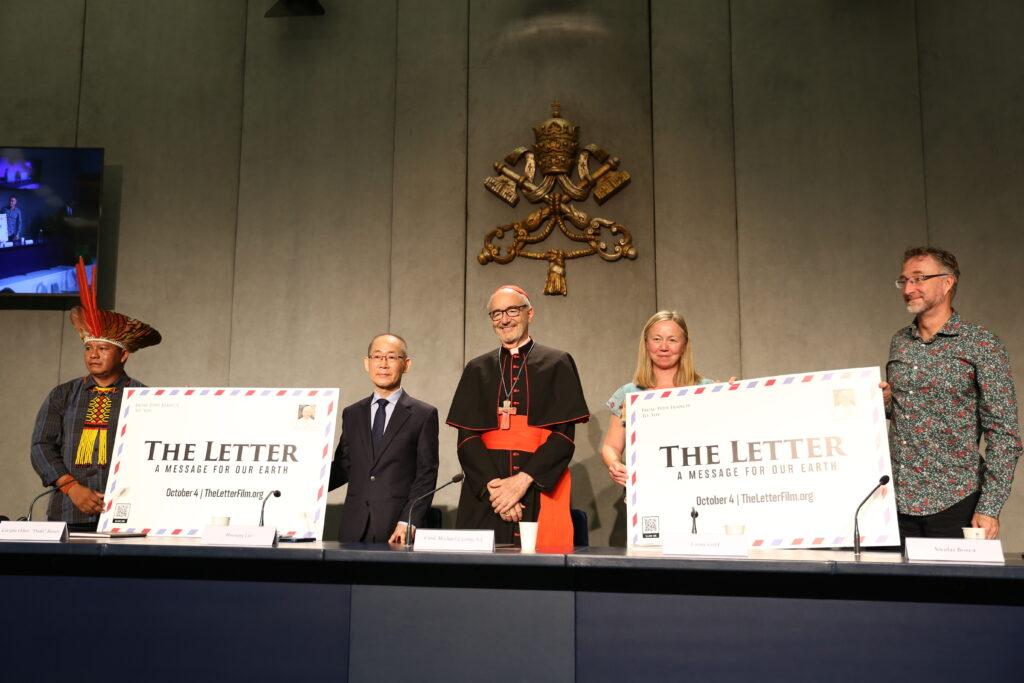
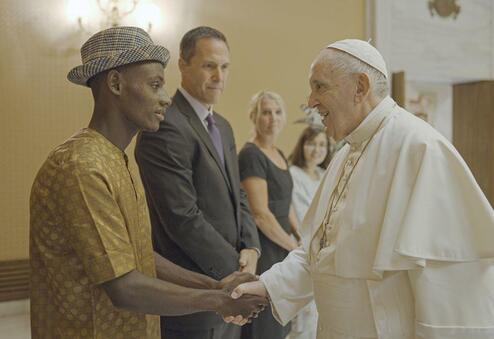
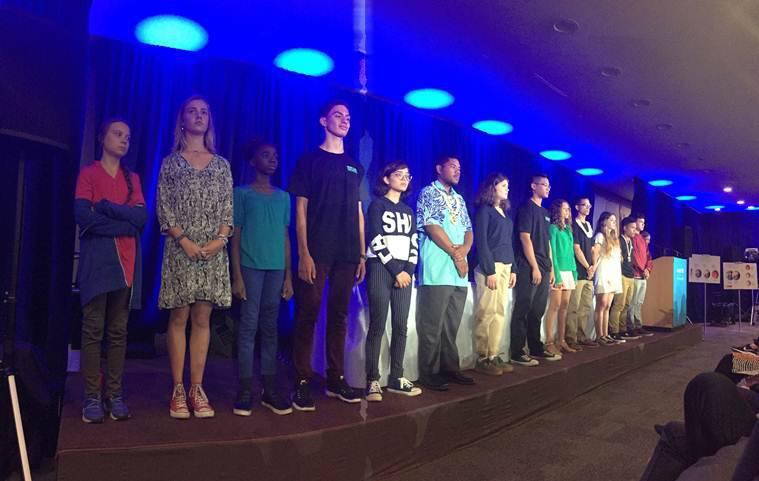


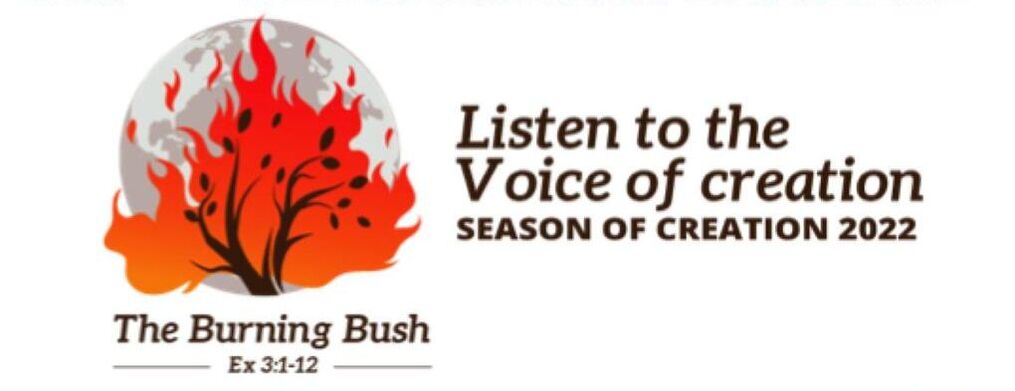
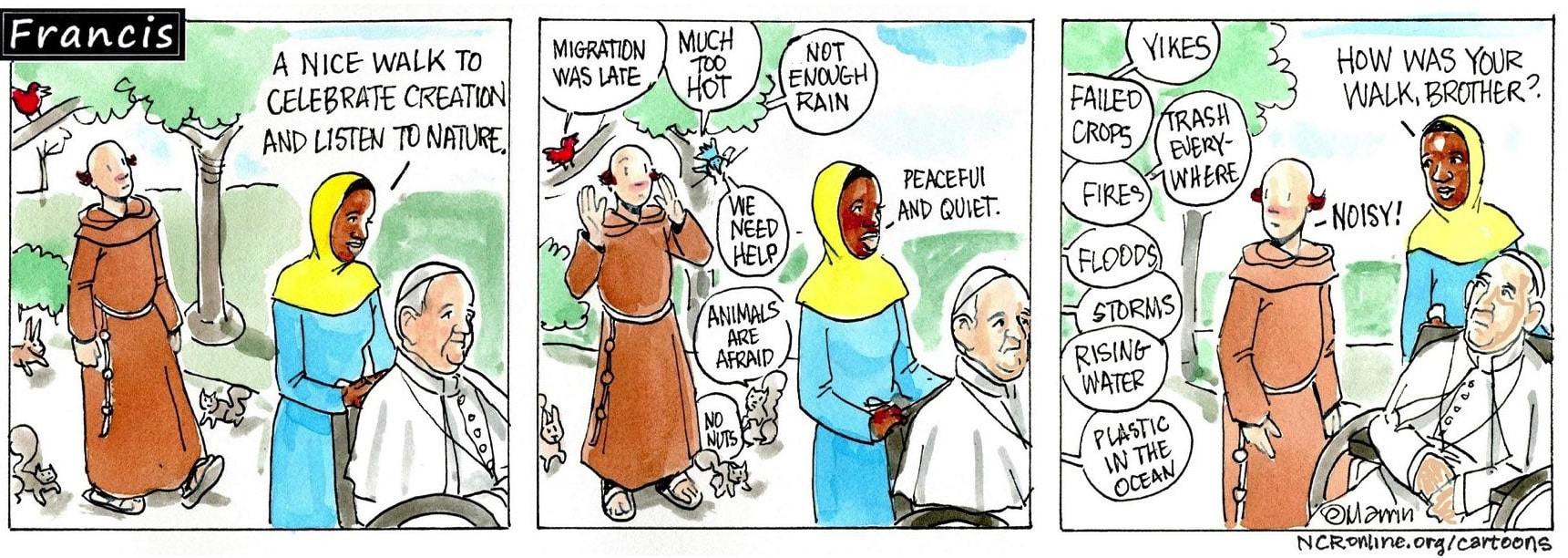
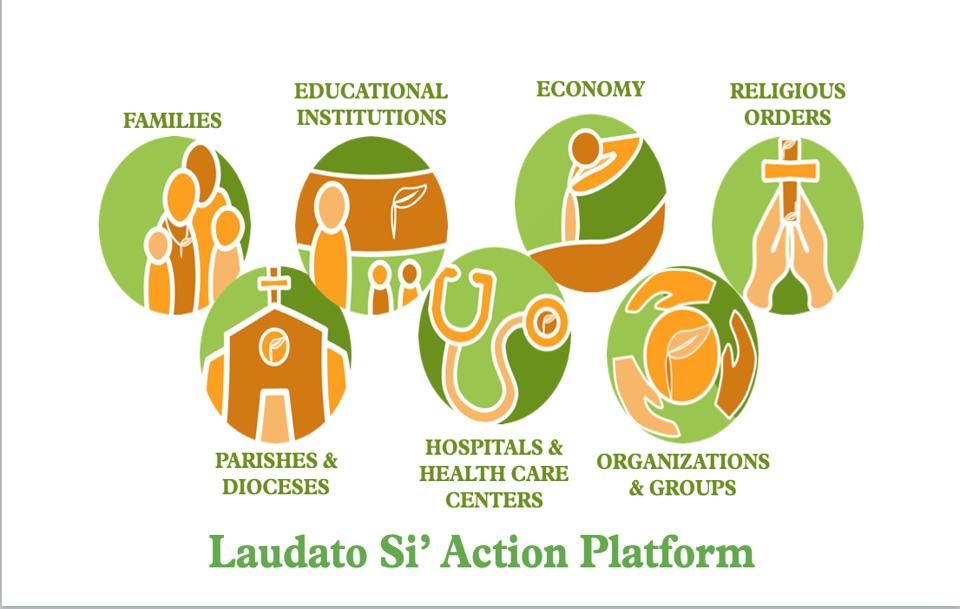
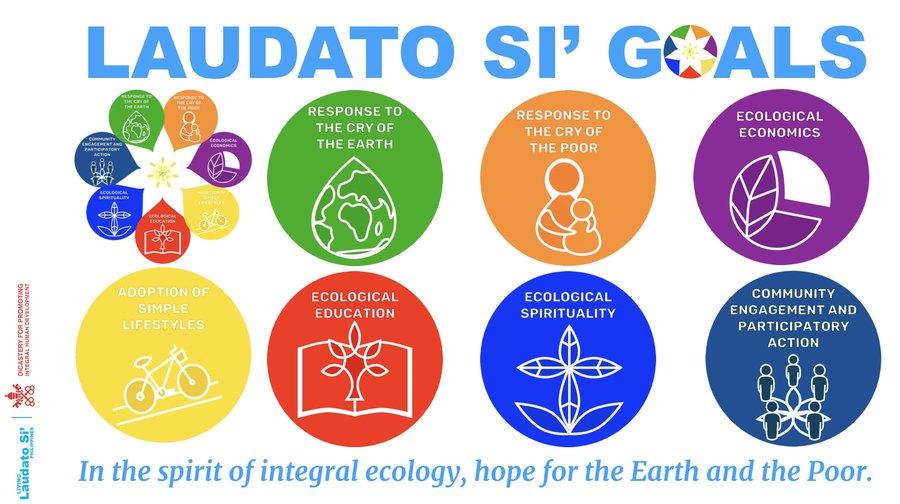
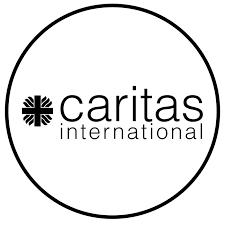
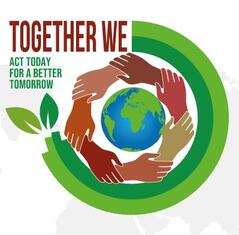

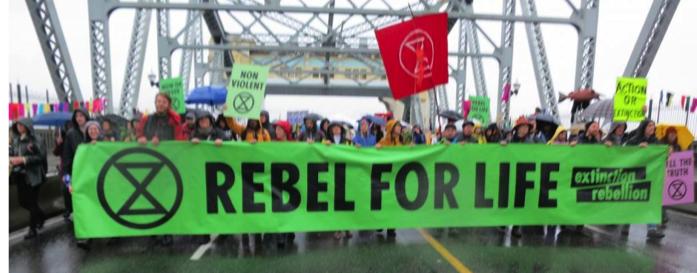
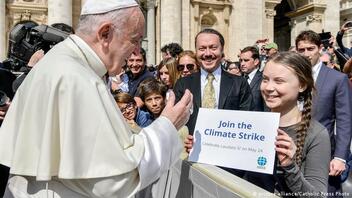
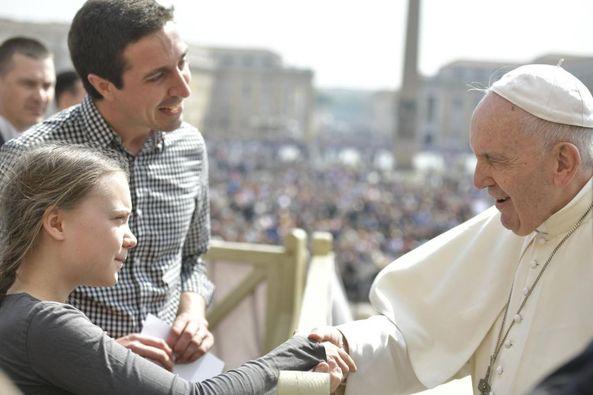
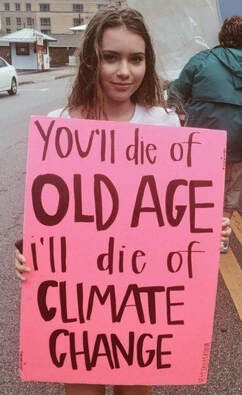
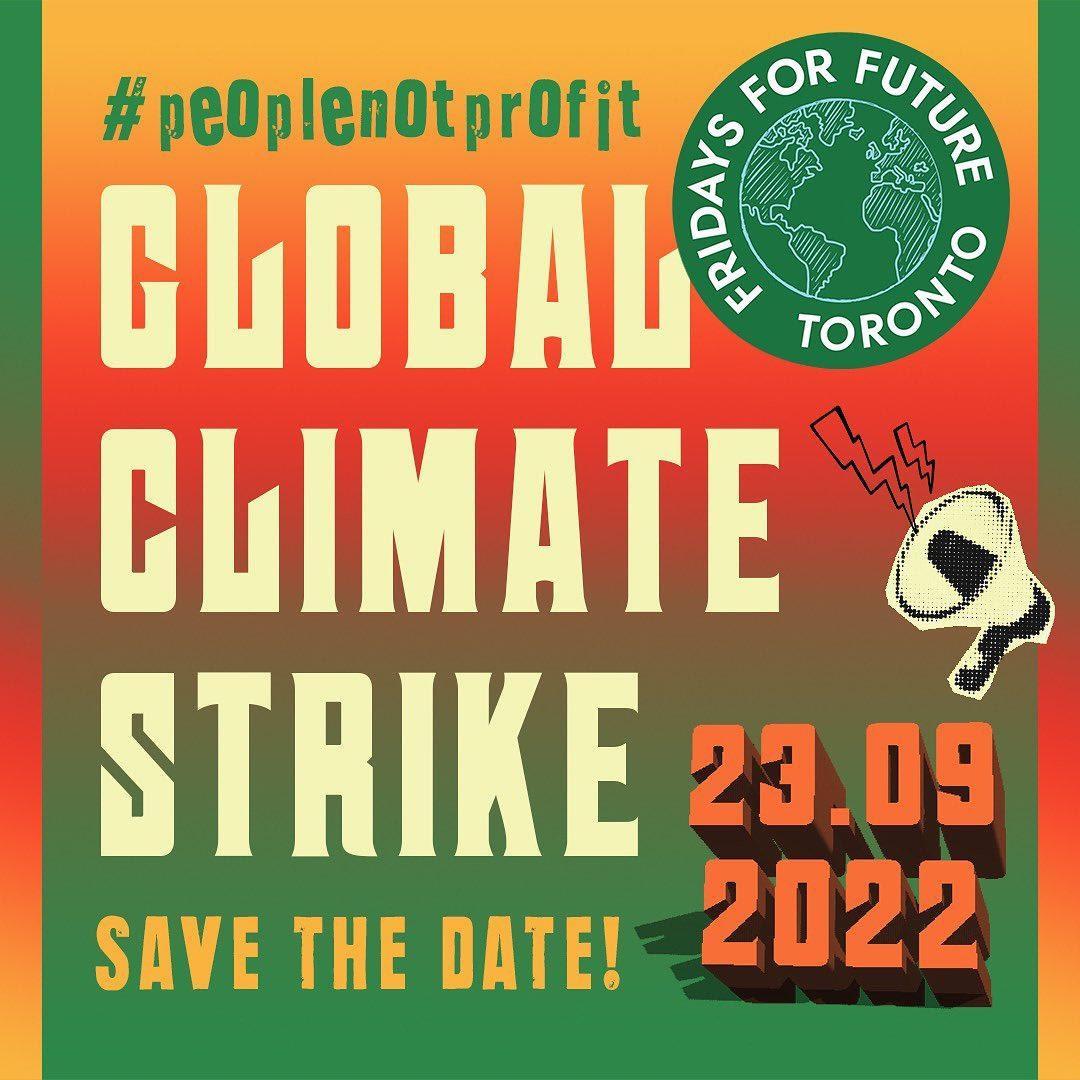
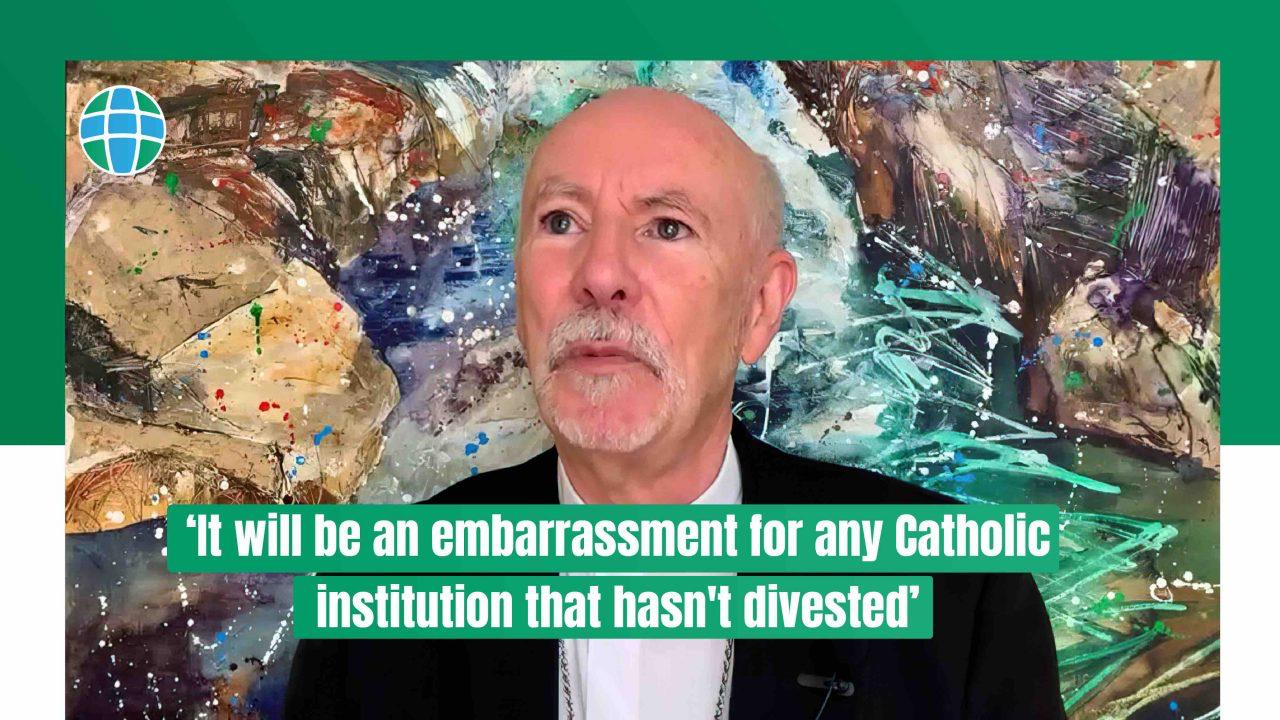


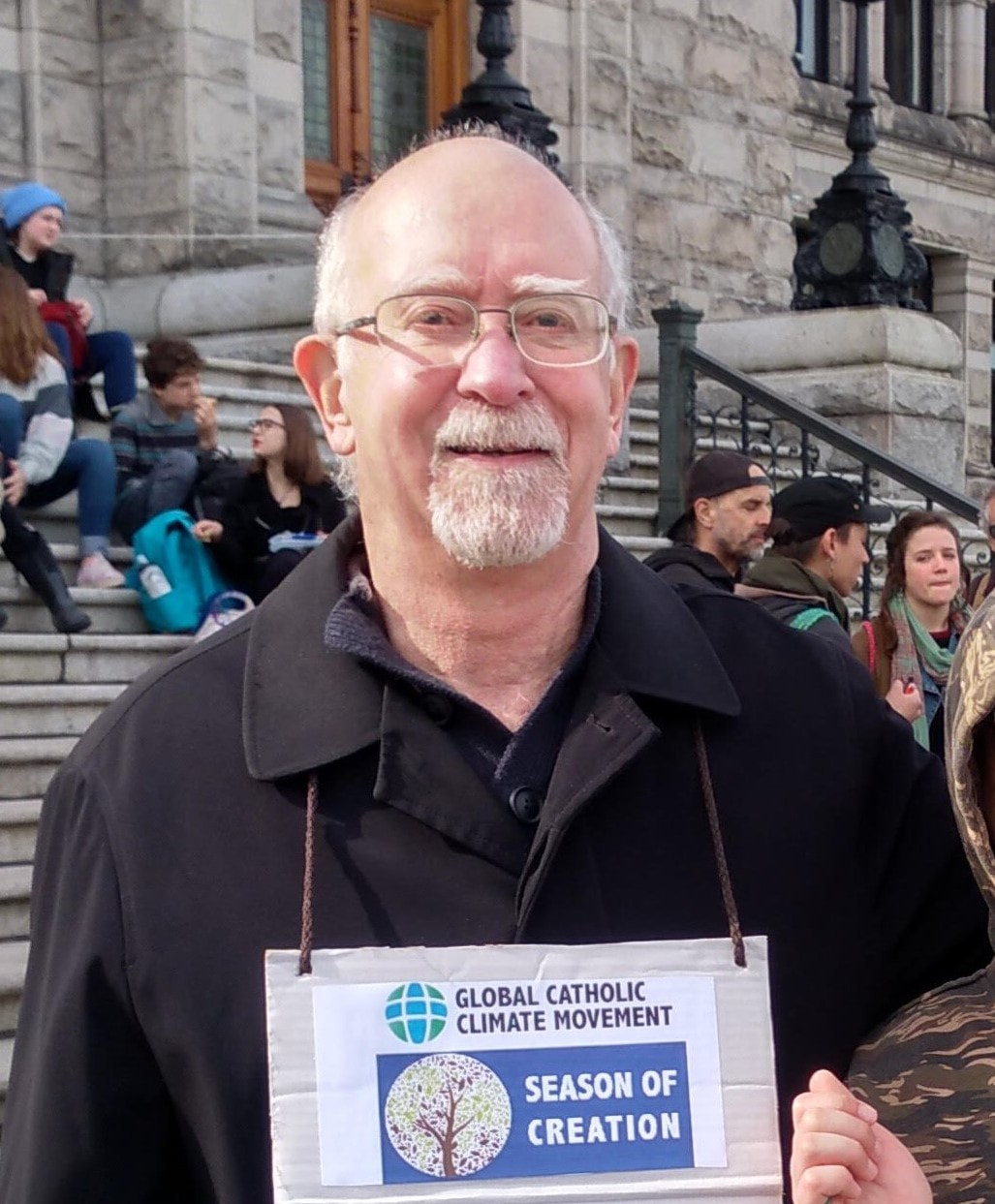

 RSS Feed
RSS Feed